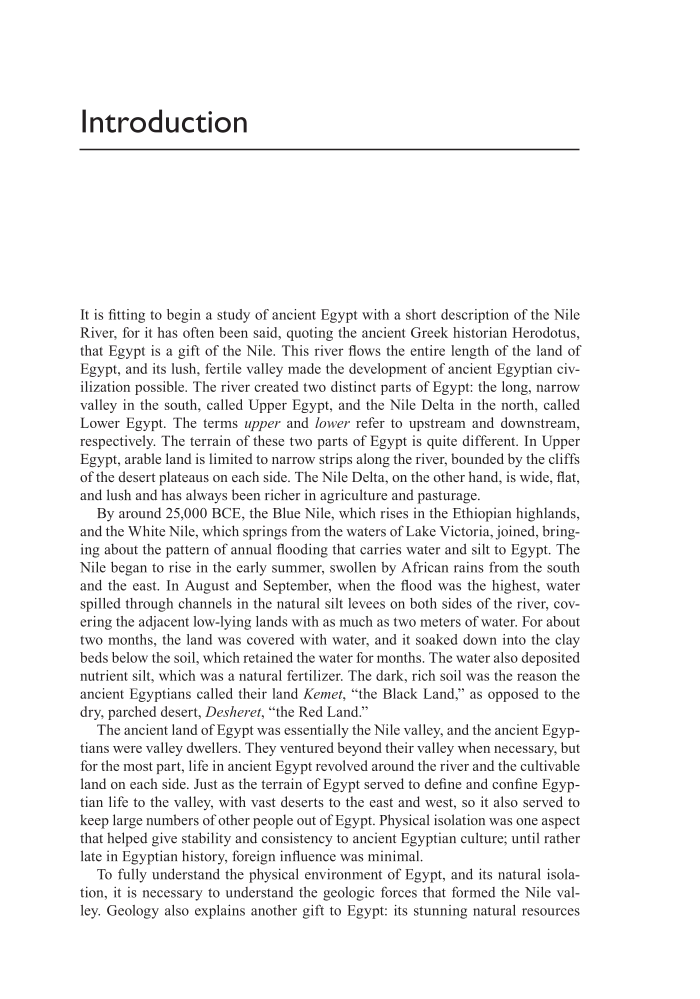Introduction It is fitting to begin a study of ancient Egypt with a short description of the Nile River, for it has often been said, quoting the ancient Greek historian Herodotus, that Egypt is a gift of the Nile. This river flows the entire length of the land of Egypt, and its lush, fertile valley made the development of ancient Egyptian civ- ilization possible. The river created two distinct parts of Egypt: the long, narrow valley in the south, called Upper Egypt, and the Nile Delta in the north, called Lower Egypt. The terms upper and lower refer to upstream and downstream, respectively. The terrain of these two parts of Egypt is quite different. In Upper Egypt, arable land is limited to narrow strips along the river, bounded by the cliffs of the desert plateaus on each side. The Nile Delta, on the other hand, is wide, flat, and lush and has always been richer in agriculture and pasturage. By around 25,000 BCE, the Blue Nile, which rises in the Ethiopian highlands, and the White Nile, which springs from the waters of Lake Victoria, joined, bring- ing about the pattern of annual flooding that carries water and silt to Egypt. The Nile began to rise in the early summer, swollen by African rains from the south and the east. In August and September, when the flood was the highest, water spilled through channels in the natural silt levees on both sides of the river, cov- ering the adjacent low-lying lands with as much as two meters of water. For about two months, the land was covered with water, and it soaked down into the clay beds below the soil, which retained the water for months. The water also deposited nutrient silt, which was a natural fertilizer. The dark, rich soil was the reason the ancient Egyptians called their land Kemet, “the Black Land,” as opposed to the dry, parched desert, Desheret, “the Red Land.” The ancient land of Egypt was essentially the Nile valley, and the ancient Egyp- tians were valley dwellers. They ventured beyond their valley when necessary, but for the most part, life in ancient Egypt revolved around the river and the cultivable land on each side. Just as the terrain of Egypt served to define and confine Egyp- tian life to the valley, with vast deserts to the east and west, so it also served to keep large numbers of other people out of Egypt. Physical isolation was one aspect that helped give stability and consistency to ancient Egyptian culture until rather late in Egyptian history, foreign influence was minimal. To fully understand the physical environment of Egypt, and its natural isola- tion, it is necessary to understand the geologic forces that formed the Nile val- ley. Geology also explains another gift to Egypt: its stunning natural resources
Document Details My Account Print multiple pages
Print
You have printed 0 times in the last 24 hours.
Your print count will reset on at .
You may print 0 more time(s) before then.
You may print a maximum of 0 pages at a time.

































































































































































































































































































































































































































































































































































































































































































